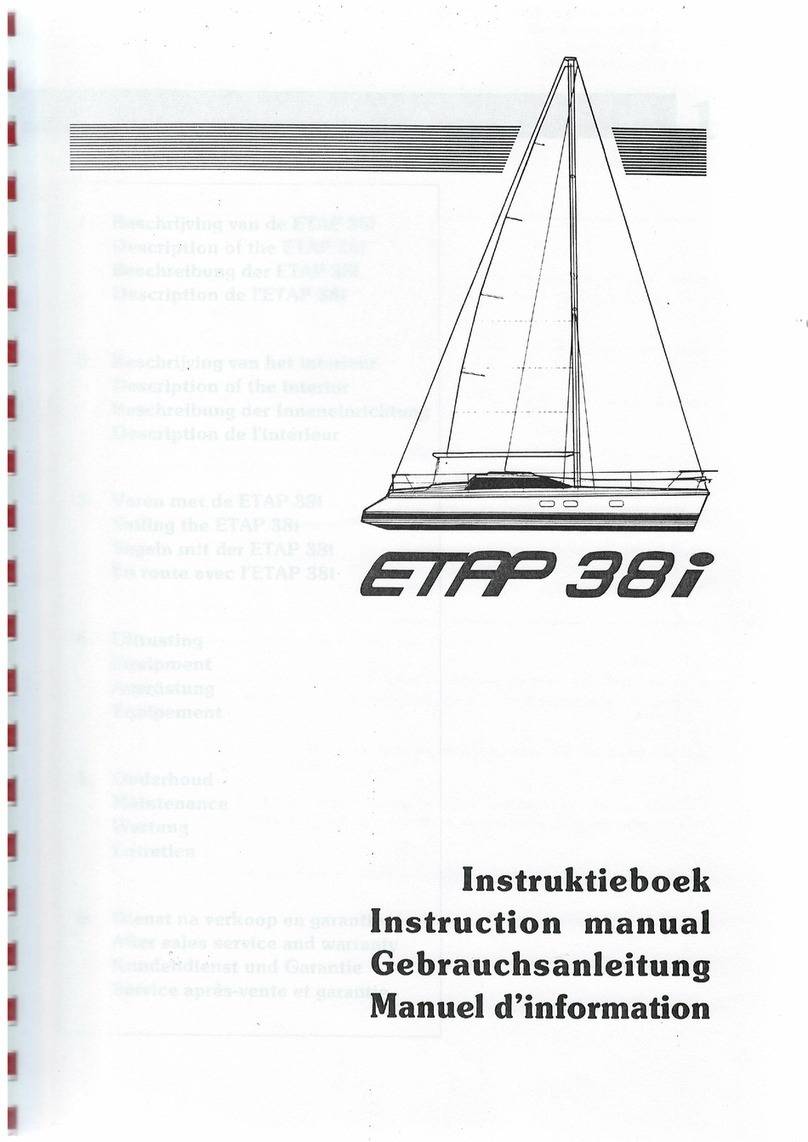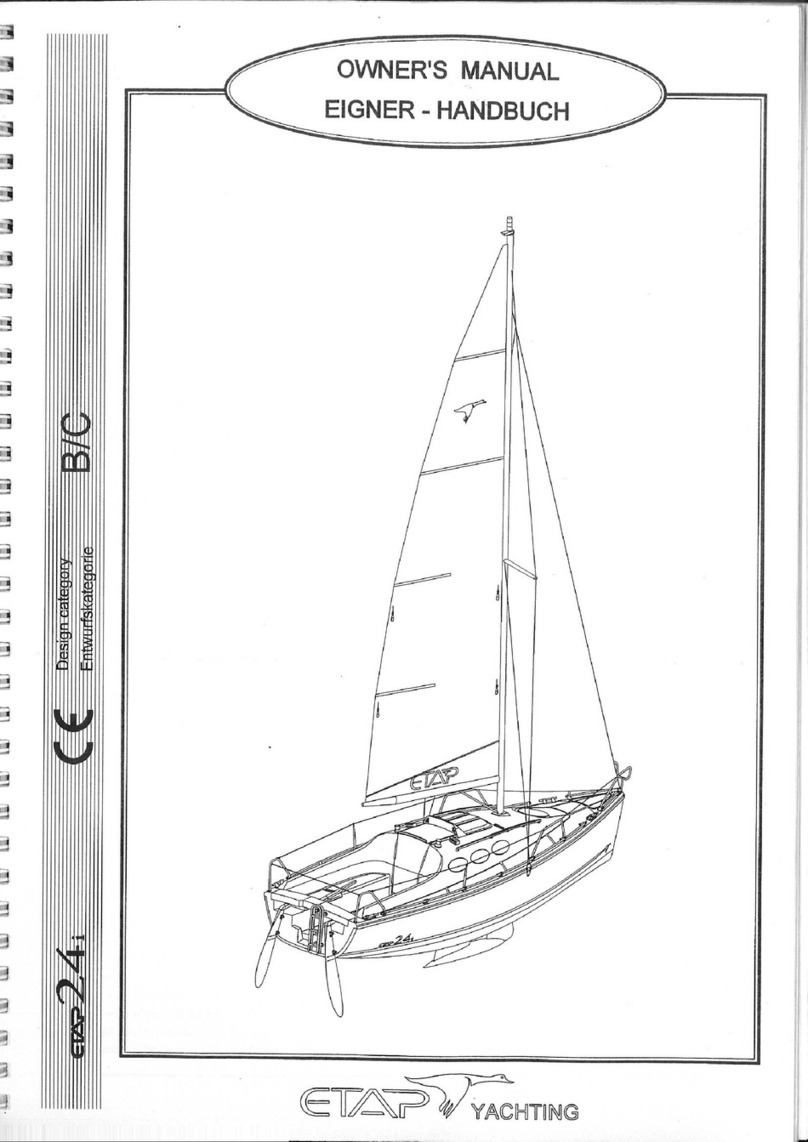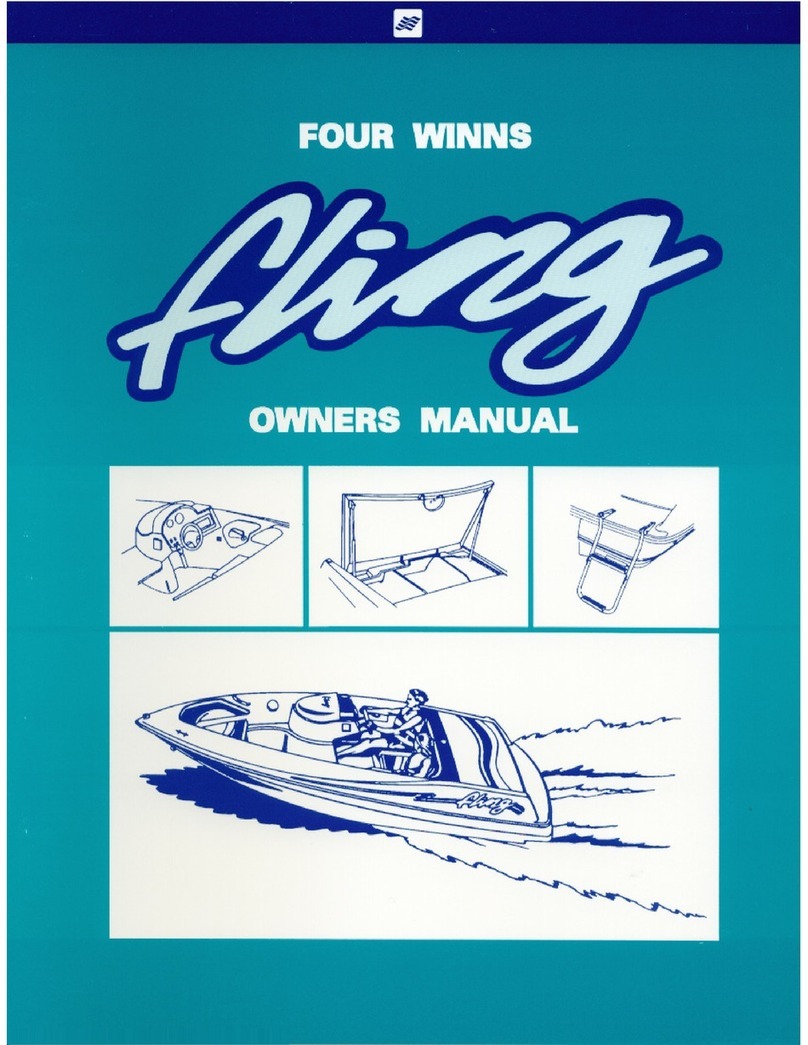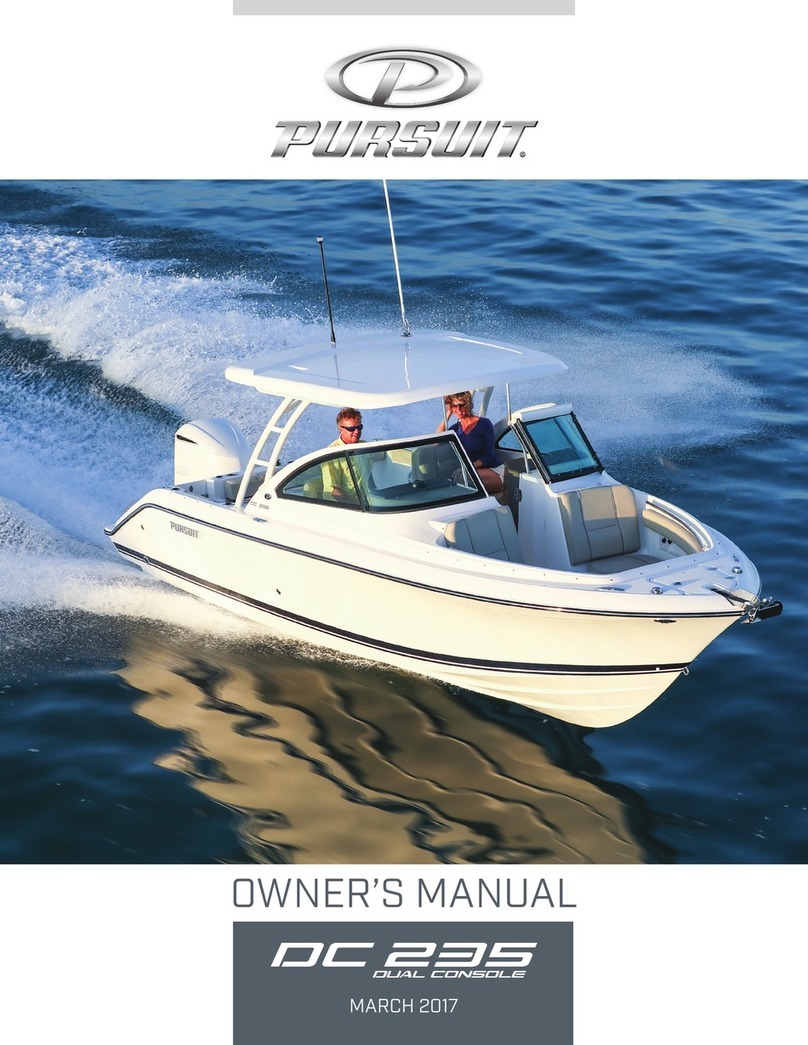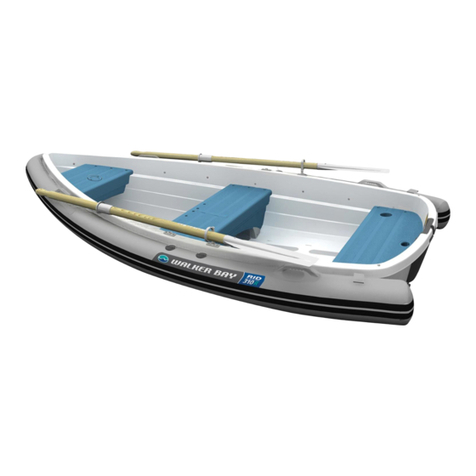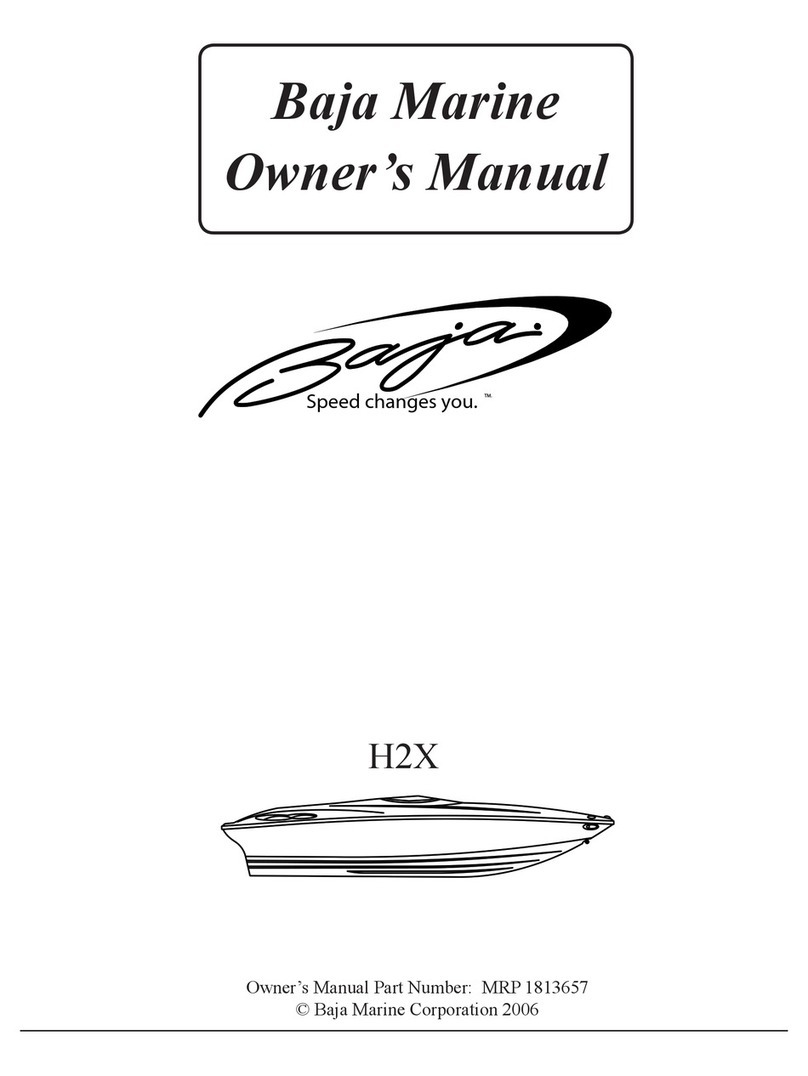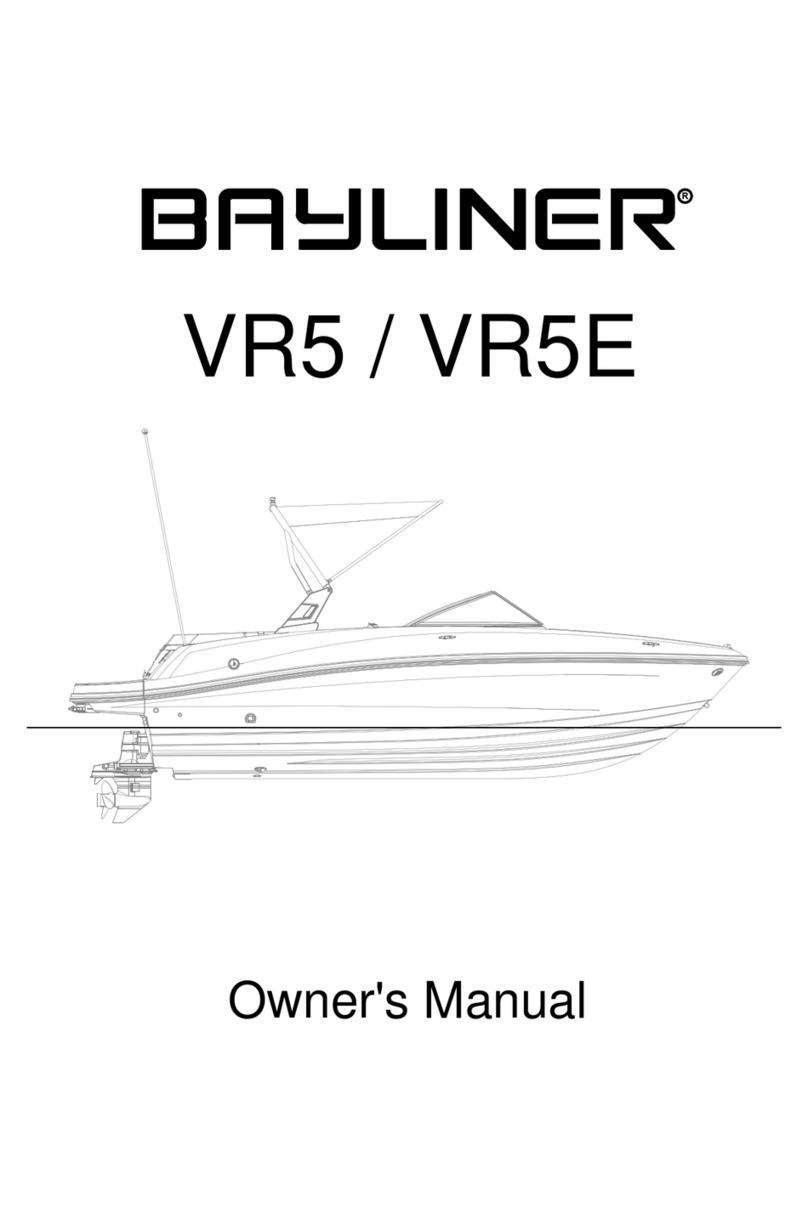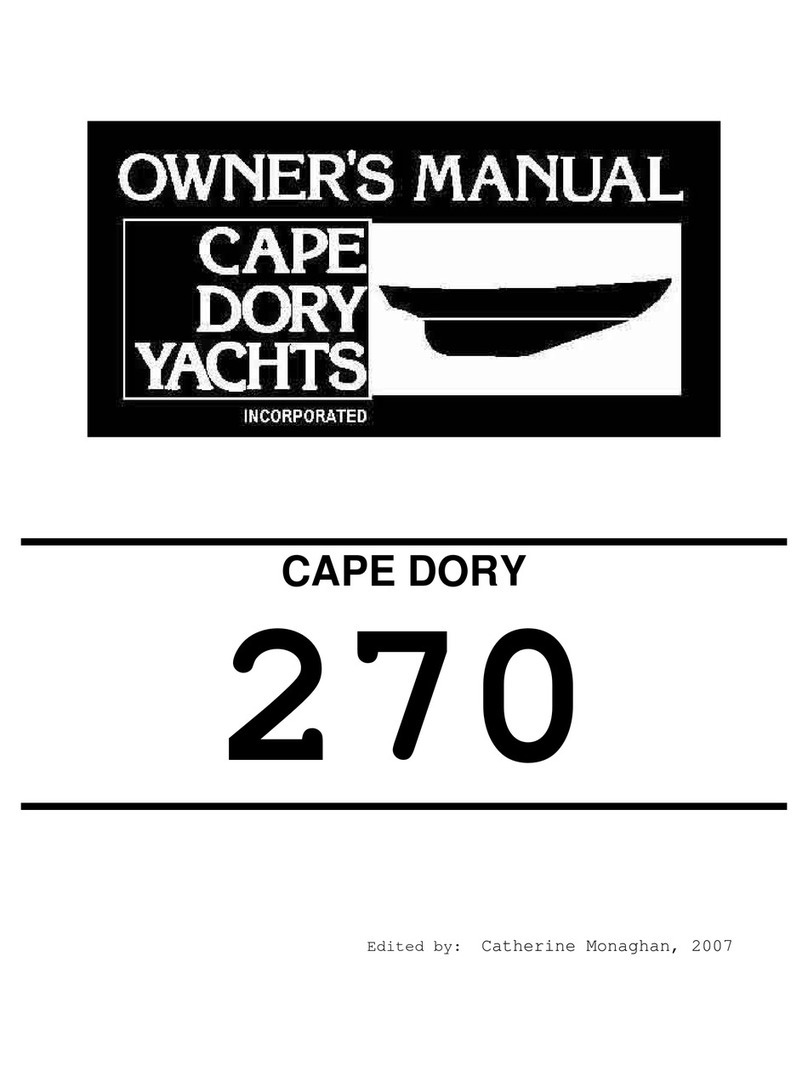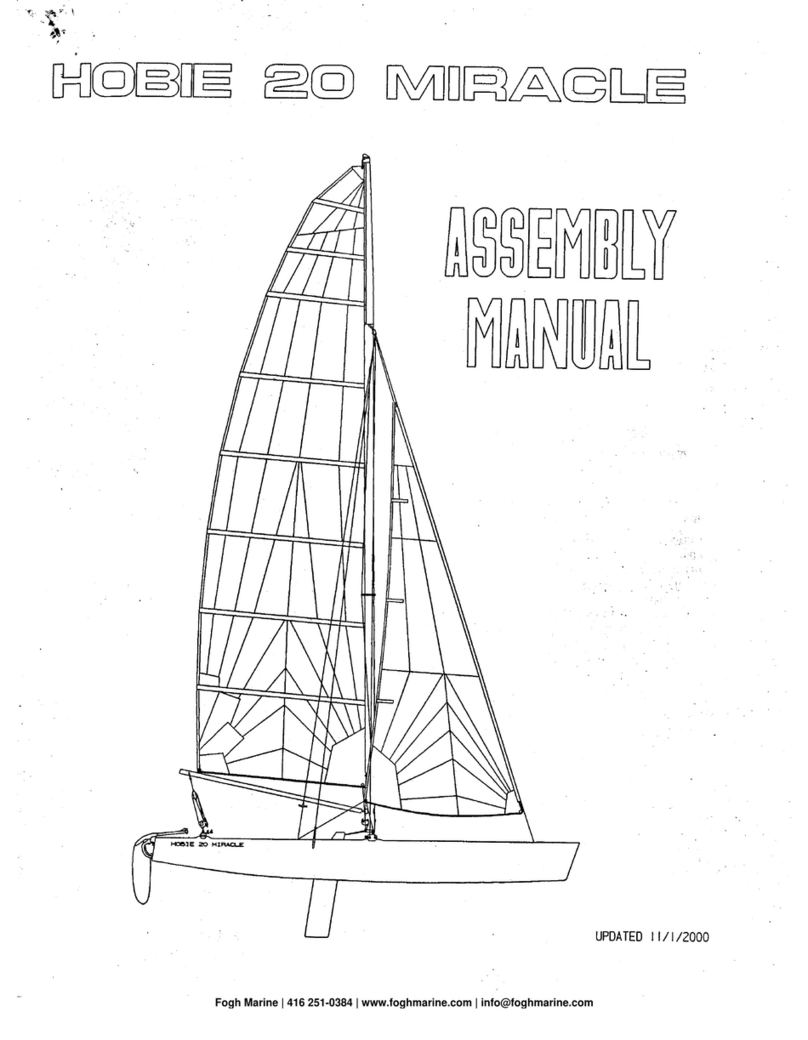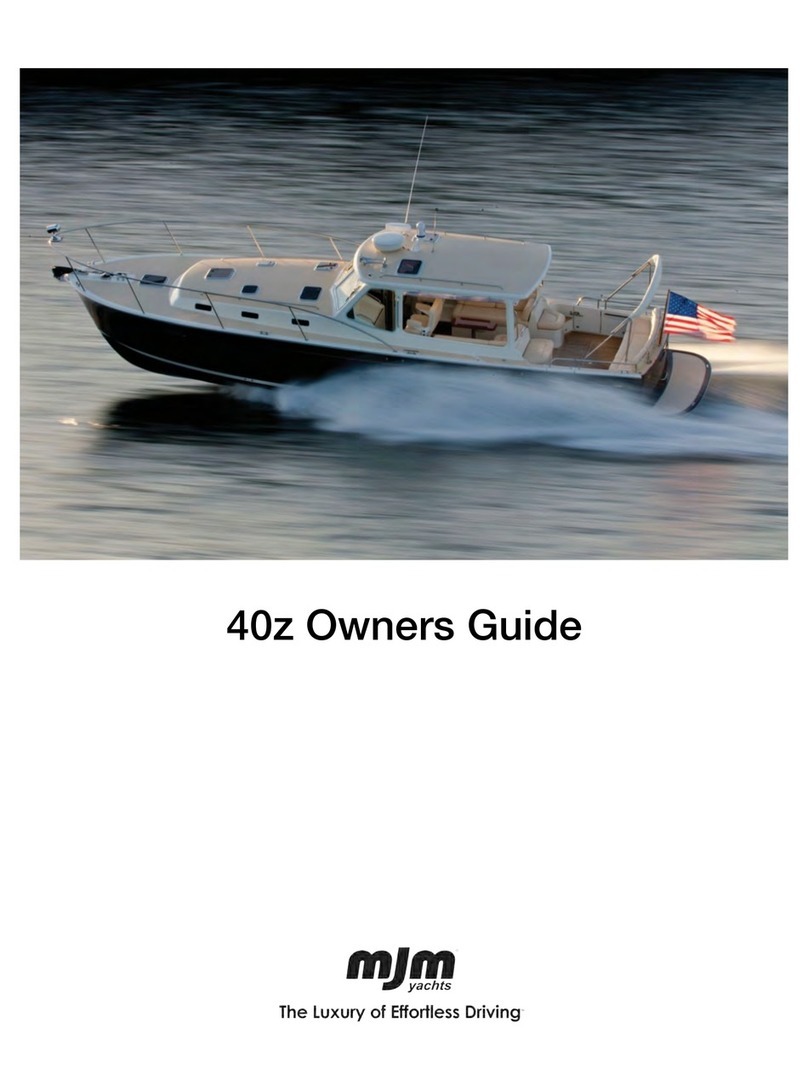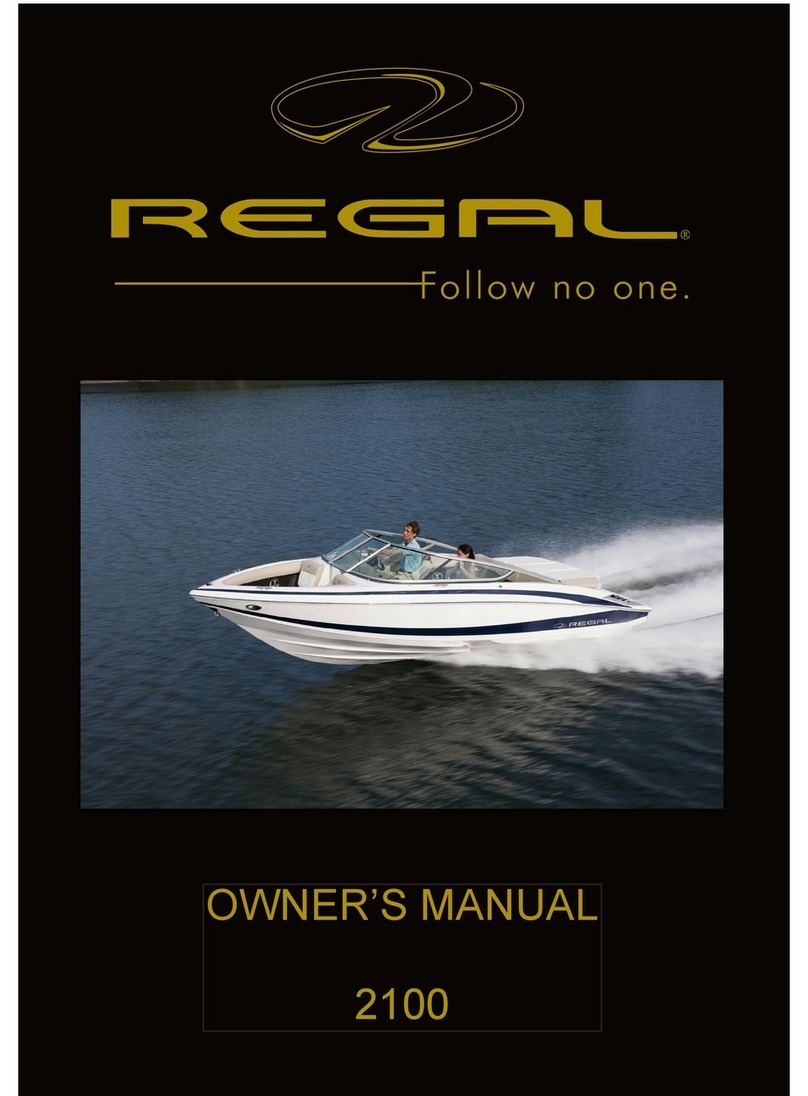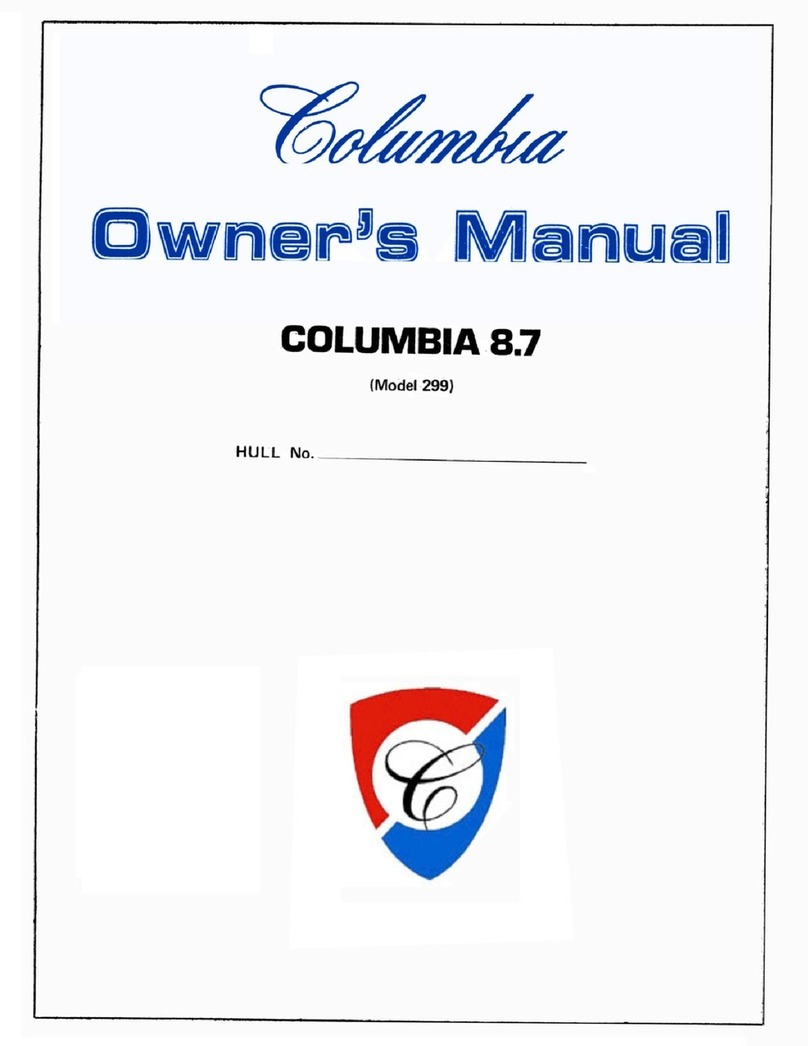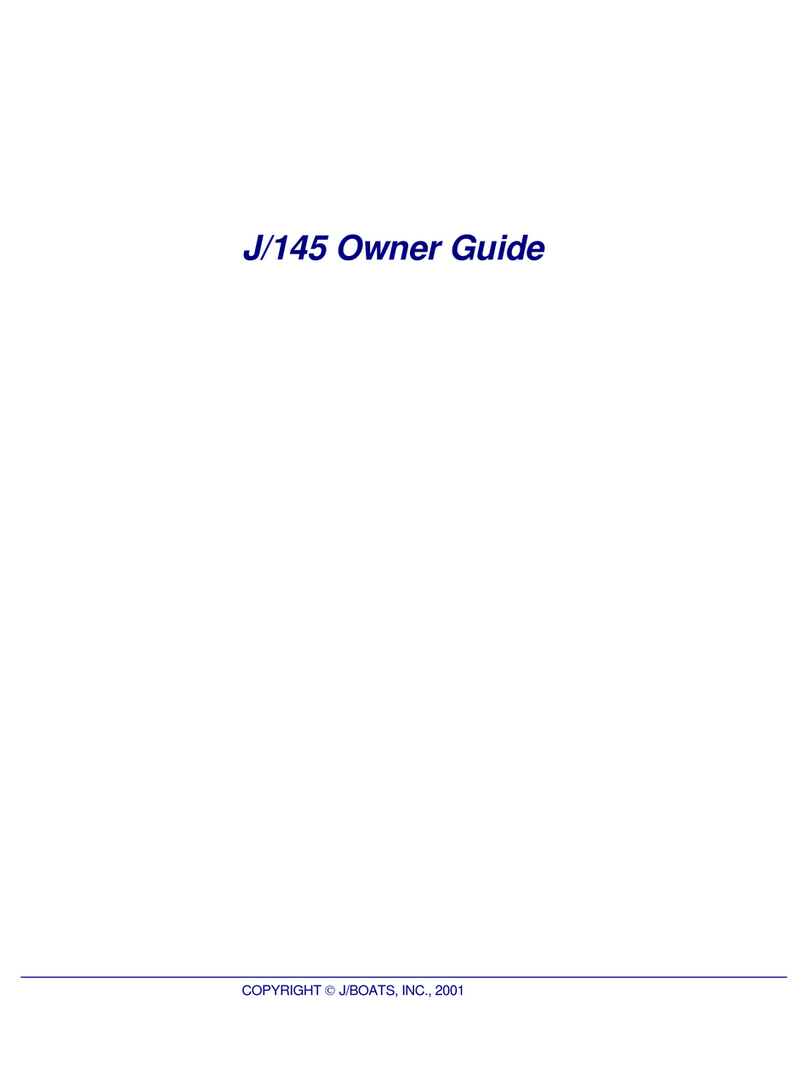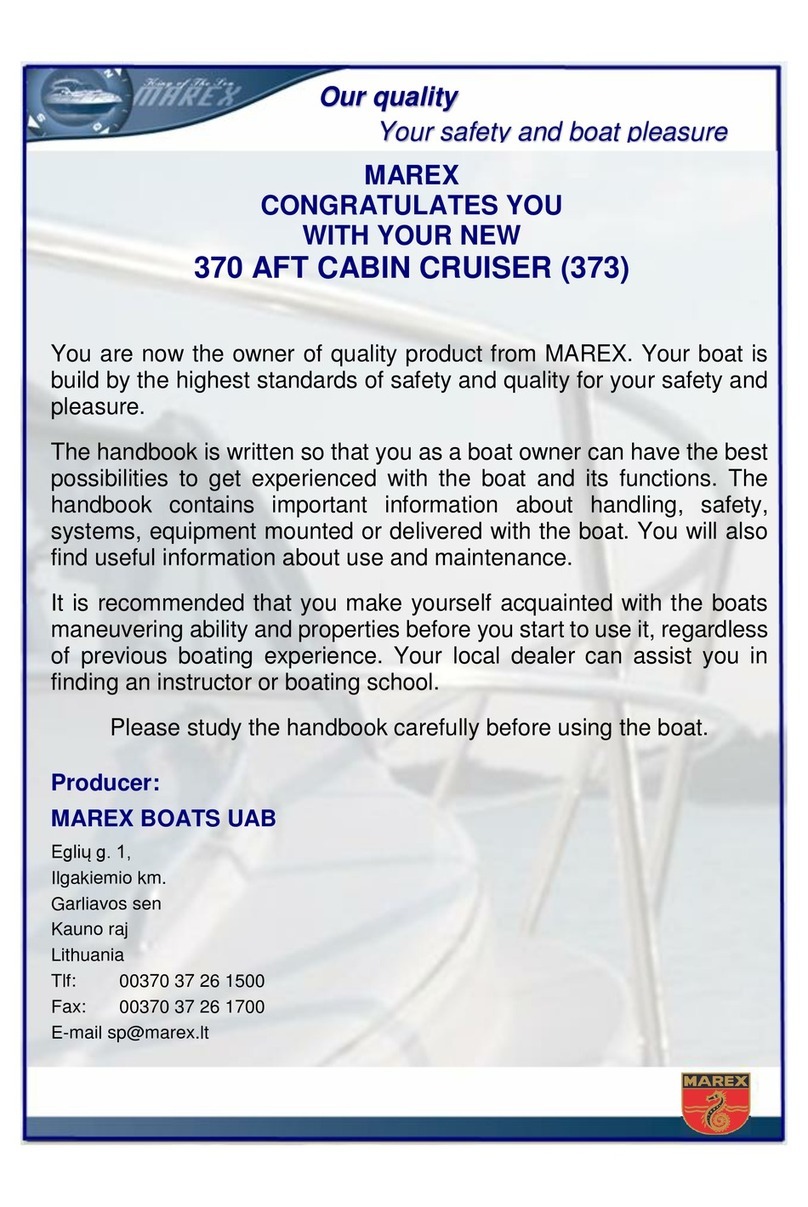ETAP 28s User manual

k
UJ
Eige naars hand boe k
Eigner Handbuch Manuel de propri6taire
Owner's Manual
a
lr'-
-*

)
,)
-=r
-1
--=l
-j
---J
--:::
T
T;5;>
This manual meets the requirements of ISO 10240
@ ETAP Yachting NV
Steenovenstraat 2
BE - 2390 Malle
Belgium
Tel. +32 (0)3 312 44 61
Fax+32 (0)3 312 44 66
E-mail: info@etapvachtinq. com
Website: http://www. etapvachtinq.com
Subject to changes in specifications at all times.
No ights can be deived from this manual. The responsibitity for the text remains with ETAp yachting NV.
some diagrams and/or photographs feature options which are not supplied as standard.
ETAP Ya.chting NV accepts no tiability for /oss or damage resulting from the literat wording of this manual where
reasonableness and fairness have precedence over the literal wording. Neither can any tiabitity oiany kind be accepted for
loss or damage resulting directly or indirectly from modifications to thii yacht after its construction.
Ail nghts reseNed. No part of this pubtication may be reproduced, stored in a retrieval system, or transmitted in any form or
by any means, whether electronicalty, mechanicalty or by means of photocopying, recording or otherwise, without the prior
witten permission of ETAP Yachting NV.
Version 2511012006
ETAP 28S 1 I 78

T
T;NP
-')
:=
=qr
{
-=
-
_-
_{-:|
q
-
4
r=--
-4
Table of contents
ETAP 28S 2 I 7A
1
2

-1
I
a
I
IT
trmG)
Table of contents
1
2
-
te
fa
=E
=
=
=
=
=
=
=
=
=
=
=
=
=
=
=
=
=
=
a
1
ETAP 28S 2 I 7A

5
t
=
-B
-=
q
=
=
=
=
=
=
-4
1
=
=
=
=
=
=
={
---
=
---
€
_-
-
-=,
--
_{
-
---
-
=
1
1
T
1K;:}
3.7.5 E_mptying hotding tank via the through_huil fitting..... ........... 30
3.7.6 Emptying waste water tank via shoie station ....................... 3t
3.7.7 l|o9kinO discharge overboard.... .......................31
3.7.8 Maintenance, problems and preparing for winter.. ............... 3t
3 8 BtLGr svstrv ...................32
3.8.1 l1V9ut of the system .................... 32
3.8.2 Maintenance, problems anc! preparing for winter.. .............. -3_3
3'9 ELECTRT.AL sysr8M......... ...................... 34
3.9.1 L_ayout of the system . ..... ........ 3q
3.9.2 Batteries '......,,......... 31
3.9.3 12 VDC sysfeln.......... ....... ............ -lj
3.9.4 250 VAC system.......... ....... .........36
3.9.5 Navigation tighting.......... .............. J8
3.9.6 Maintenance, problems ancl preparing forwinter.. .............. 39
3.1 0 HEATTNG AND vENTtLATtoN................ ........................... 40
3.10.1 Heating (optional)...... .. ..............40
3.10.2 Ventitation.... ............ 40
3.10.3 Maintenance, problems and preparing for winter.. .............. 10
3.1 1.1 lnstructions for use of the gas sysfem ............. 4t
3.11.2 Sforage of gas botiles.................... .................... 4t
3.12 FIRE EXTINGUIsHER sysrEM ...................42
3.12.1 Fire extinguishers.............. ............ 42
3-12.2 Responsibilities of the yacht owner .................. 42
3.12.3 precautions. ............ 42
3.12.4 Maintenance, problems and preparing for winter.. .. ........... 42
3.1 3 THRoUGH-HULL ourLETS... ..................... 44
3.13.1 t.9cati9n of through_huil outtets........ ................. 44
3.13.2 Use of through_huil outtets . ......... 44
3.13.3 Maintenance, problems ancl preparing for winter.. ............... 44
3.15 DECK EeutpMENr................ .................... 46
3.15.1 Anchor winch ....... .... ...,................ 46
3.15.2 Winches....... ............ 46
3.15.3 Mooring c/eals........... .......,............ 46
3.15.4 Maintenance, problems and preparing for winter.. .............. q7
3.16 Nnvrcnrror.lNSrRUMENrs ..........:........_.............._............................................................47
4 SAILTNG YOUR yAcHT........ ......................4e
4.1 pREpARtNG To sAtL/srEpptNG THE MAST............. ........ 49
4.1 .1 Masf assemb ty ........ ........... 49
4.1.2 Basic trim for fractional rigged rnasf.............. ......................... 49
4.1.3 Assembly of the secona iorestay (optionat)..... ..................... 49
4.1.4 Boom + kicking s/rap....... ..... ....... 50
4.1.6 Running rigging . .................. 52
4.2 UILtry DEoK............. ........52
4.3 FASTENTNG potNTS FoR MooRtNG AND TowtNG ..........52
4.4 LoAD AND LoosE AccESSoRtES.......... ......................... 52
4.5 Spreo, TURNTNG ctRCLE, sropptNc D|STANCE ........... 53
4.6 Serrrruc sAtL AND MANoEUVRTNG ........... 53
4.7 OnEMTING rHE sArLS...... ....................... 53
4.7.1 lositjgn of running rigging . ...................... jj
4.7.2 le9.!inO (educing sail) .............. ........................ s4
4.7.3 S^liting with asymmetricatspinnaker (optiona|... .................. jj
4.7.4 Storm sail or working jib on' 2no foresiay pplinatl .............. Jj
4.8 SratutoRy REGULATTONS AND RULES oF THE WATER.......... ............ 55
ETAP 2as 3 t 7a

7.1
7.2
,
,
t
J
a
I
t
jl
I
I
I
I
I
I
I
I
I
t
I
I
I
I
1
!
I
I
I
I
I
)
T
m?
Wnsrr
NotsE..
10.1 ..DAILY,,CHEcKLIST....
10 2 "Fretnntn" -LC^t,t t^r '........'....'... 70
iZ'"', Ylz:'!::l::l :t!:?! :!t,?ill; *";b;i;; l;;;i;;i ;:i;;;;;;; ;; ;;;;;;i ;;;;;i;;;;;;;;';
10 3.2 trvhen the yacht is returned to ihe ;;i;r;i;;i;;;;;'";;i:r;' ;:':;;;:i#,;i:::::"
ETAP 28S
73
4 I 78

I
l
/
9
I
/
)
J
at
1
-1l
"1t
-3
3
--4
11
12
12.1
12.2
12.3
ETAP 28S 5 I 78

),
,J
j
j
=
-
=
-+
=
..+
=
=
4
1
:3
:3
:a
:a
=
=
=
=r
=
=r
e
=r
=
=
=r
I
=
=
a
1
T
rcP
1FOREWORD
we sincerely congratulate you on the purchase of your new ETAp yacht and thank you for your
confidence in our products I
ln our opinion, a top quality yacht is_the best guarantee of an enjoyable holiday and plenty of sailing
P]u'.!f: That's why everyone at ETAP Yach-ting rras ouiit youi v,i"tit with utmost care.
Your ETAP yacht is a safe yacht: double-skinned and unsint<aOte.
The deliverY of your yacht does not mean the end of our relationship... in fact it is just the beginning I
Your ETAP distributor remains at your full disposal and is your first point of contact if, at any time,
you have any questions about youi rtnR yacht. This way trre ,o.t "ni.i"nt service is assured.
About one year after the commissionning of your yacht, you will receive from us a questionnaire to
assess your satisfaction. Your responses to this questionnaire will enable us to furthei opiiri." o|'lr
products.
ln case you'are the second 9y!er, we kindly request you to fill in the "ETAP second sale service,,
form and return this to us so that we can keep our customer database up-to-date and send you our
newsletters.
We wish you safe sailing !
ETAP Yachting NV
ETAP 28S 6 I 78

I
--
-=
-=
r=
:=
---a
-=
r=
-=
--
-
-
-=
=
=
=
=
=
=
=
=
=
=
=
=
=
=
=
1
=
T
T;r$>
2
2.1
GENERAL INFORMATION
Wlry an owney's manual?
This owner's manual has been produced to help you sail your ETAP yacht in all safety.
It contains information about the construction, fitting-out, characteristics and the use of options of
your yacht, the facilities included and installed, the technical systems and all the equipment and
instruments on board.
This will give you the knowledge and information you need to correctly operate your yacht and ti:
derive optimum enjoyment from it. Please therefore carefully read everything ihrough and
familiarise yourself with the yacht before operating it.
However, this owner's manual is not a detailed gulde for maintenance or problem solving. ln case
of doubt, please always contact your local ETAp distributor.
Please also carefully read through the instruction manual of the engine and the other equipment on
board.
KEEP THIS OWNER'S MANUAL ABOARD YOUR YACHT IN A SAFE AND DRY PLACE.
IF YOU SELL YOUR ETAP YOU HAVE TO HAND OVER THE OWNER'S MANUAL TO THE
NEW OWNER AND HAVE HIM SIGN A PROOF OF RECEIPT.
Seamanship
The owner's manual is not an instruction book on sailing, seamanship or navigation. To become
skilled in those areas you will have to consult different literature and/or ta[e the appropriate
courses. lf this is your first yacht, or if you are not yet familiar with sailing, please make sure that
you accumulate sufficient experience before taking command of the ship.
ln some countries a navigation licence is compulsory whilst in other countries this is not required.
Howevel it is always useful to acquire the necessaiy knowledge and to obtain such a navigation
licence. Detailed information is available from water sports orgianisations. your ETAp distributor,
your water sports association or the national authorities will certainly be glad to furnish you with
addresses of sailing schools or competent sailing instructors.
The owner or skipper must ensure that the wind and sea conditions are suitable in view of the
design category of the yacht and that the crew is capable of maintaining control of the yacht in such
conditions.
Even though this yacht has been approved in category B/C, you should bear in mind that the worst
wind and sea conditions that correspond to this category (see below) can be dangerous. ln these
conditions, only a fit and experienced crew with a well maintained yacht can sail in iafety.
Check the tension of all bolts and screws on your new yacht (if necessary in consultation with your
ETAP distributor), and do so again after aboui a fortnight of saiting.
Polyester, rubber and all other synthetic materials havL a tendency to shrink under tension. Despite
the fact that the yacht was checked before it left the yard, we recommend that you check the
following again: the bolts on the keel, sail drive, engine, fuel tank, sea rail ano deit< fittings. The
bolts on the batteries and main fuses also need to Ue tignt to prevent excessive heating due-to poor
contact !
Always keep your yacht in good condition and bear in mind that wear and tear will occur after some
time as a result of use.
22
23
ETAP 28S 7 I 78

T
m;)
?A
A
OA"GER I
A
CAT'TK)H !
A
ATTE'rcH!
E
C€
tr
tr
Any yacht, however reliable, can be damaged if it is incorrectly used. Always use your yacht in safe
conditions and adjust your speed and course to the sea conditions.
lf your yach! is equipped with a life raft, carefully read the instruction manual. The necessary safety
equipment (life jackets, harnesses, etc) should be present aboard the yacht, according to the typ6
of yacht, weather conditions etc. This safety equipment is compulsory in certain countries. The
crew must be familiar with the use of the safety equipment and emergency manoeuvres (man
overboard, towing etc.). Sailing schools organise regular courses covering these subjects.
All crew members should wear a life jacket when they are on deck. ln certain countries it is
compulsory to wear a life jacket in conformity with national regulations.
Be careful not to interpret condensation as a leak. Thanks to its "ship-in-ship" construction,
combined with foam insulation, the ETAP is an exceptionally dry yacht. This, however, does not
prevent condensation from tubes (toilet, washbasin, galley, cockpit discharge, air conditioning ...),
through-hull outlets and metal objects such as the battery, engine and otherbbjects.
When under way, ensure that all loose equipment have been firmly secured or stowed away in
lockers, boxes or other suitable locations. Check if all lockers have been securely closed. Before
you set off, windows and hatches have to be securely closed and the through-hull ouflets of toilets
and washbasins closed.
Pictoglams
Various pictograms are used in the manual or aboard your yacht. Their meanings are as follows:
lndicates that an extremely serious direct risk exists. lf no suitable preventive measures are
taken, there is a considerable likelihood of death or serious injury.
lndicates that a direct risk exists. lf no suitable preventive measures are taken, there is a
considerable likelihood of injury.
lndicates a reminder of safety measures or draws attention to unsafe actions which may result in
personal injury or damage to the yacht or parts of the yacht.
Read the instructions or the manual for the equipment concerned.
These manuals are supplied with the yacht.
This means that a diagram for the item concerned is also included in an appendix to this manual.
The CE mark stands for "Conformit6 Europ6enne", which means, among other things, that any
product that bears this symbol meets a number of essential requirements and that it cin be freely
marketed anywhere in the European Union.
A fire extinguisher can be found at this location.
The symbol for an emergency exit.
ETAP 28S 8 / 78

-
:J 'T
TAP
r=
-=
-=
-=
=
-
=
2.5
2.E
Options
This manual contains descriptions of items which
equipment. These are indicated witn ,,1opiionaty".
-
-
E
q
=
2.6 Manufacturer
2.7
#;eEm:rr':: ffi'"i:turactured bv ErAP Yachtins NV. rhe contact detairs or ErAp yachtins
Dimensions
The main dimensions of the ETAp 2gs are risted in the tabre berow.
may not be part of your yacht,s standard
l.o.a.
trutt fenotfr
waterline lenoth
b.o.;.
trutiwiotrr--
witeiiine wioih--* --
ddusht ." ", -, - - - -
Deep keel ETAP
tandem keel
8,980 m
8,600 m
8,45,0 m
3,36p m
3,Q26- m
_2,86/ m
1,160_.m-
tp,,05- m
14,860 m
1,:t,09 m
14,170 m
clearance
treight in;i.-k;ei*-**--
t
----
I
-{
1
.<
-<
-<
<
1
4
GIN code
The clN code' or craft ldentification Number..(formerly HlN, or Hull ldentification Number), is
marked on the hull at the top right-hano sioe"or tne stern'1re;;;;" yacht). The information which
is incorporated into the CIN loO" in.irOur,--
. name of the yachtyard ;
. type of yacht ;
o serial number or build number ;
. date of production ;
. model year.
The clN code of your yacht is stated in the DECLARATToN oF coNFoRMITy as the ,,hu,
number" (see chapter g).
A Do not deface the crN code. Make sure that it is arways regibre.
ATIENIIOTI !
2.9 Buildey's ptate
ln the yacht' the builder's plate is. located just below the cabin entrance. This plate containsimportant information and should not be remov"o. ir'," i"rr"wing details ii" .i"tuo'on the plate :
. name of the yacht manufacturer ;
. CE mark;
o lacht design category;
' maximum recommended number of persons on board when under way ;
o maximum load for the yacht (excluding contents Liirrf,.l.
ETAP 28S 9 I 78

g
a
tT
mp
-
"I
{
{
a
:
a
Z
;
a
a
,
{
-t
-,
{
{
I
t
..4
!
-
{
{-
i
.t
:
,
;
o
N.V. ETAP YACHTING BELGIUM
Designcategory: Al/lCl
18 l-11101
uax.l + lll = -900 kg
c€ 0525
Attention: the figures on this plate may be different for your yacht. For specific details, please refer
to Section 2.10. For the maximum load, see also Section 2.11.
z.1O Desisn category
This yacht has been approved in design category B with a maximum of 4 persons (each
weighing upto 75 kg) on board. Forinshore sailing in categoryC,6 persons (eachweighing upto
75 kg) are permitted.
Meaning of the design category in accordance with European Directive g4t2| EC:
tita*.1
A
ocean-ayachtallocateddesigncategoryAisconsid
conditions may exceed wind-force 8 (Beaufort scale) and significani wave heights of 4m aid above.
Abnormal conditions such as hurricanes are excluded. Such conditions miy be encountered on
extended voyages, for example across oceans, or on inland seas when there ii no shelter from wind
and waves for several hundred nautical miles.
BOffshore - designed for offshore voyages where co
scale) and significant wave heights up to, and including, 4m may be experienc6d.
clnshore - designed for voyages in coastal wate
conditions up to, and including, wind{orce 6 (Beaufort scale) and significant wave heights up to, and
including, 2m may be experienced.
DSheltered waters - designed for voyages o
including, wind{orce 4 (Beaufort scale) and signiflcant wave heights up to, and including, 0.5m may be
experienced.
The allocation of the "design cgt9Sory" is based primarily on static stabitity figures ("STtX" and ,,Angte
Stability") in accordance with ISO 12217. ln addition, a number of constiuct]on elements have beLn of Vanishing
subjected to
A
trTEXInl
certain requirements, which can differ from one design category to another.
The fact that a yacht has been approved in a certain category does not therefore mean that it can
rigged under these conditions or will behave as it would on a calm sea with litfle wind. be sailed fully
It is the skipper's responsibility to adjust the sails, speed and handling to the conditions and to issue the necessary
safety instructions to the crew.
Failure to adjust to the wind and sea conditions can result in damage to the yacht and can put the safety of those on
board at risk.
L1l Weights . Maximum load - Gapacitv of tanks
Deep keel ETAP
tandem keel
-e_ry'ply ,v-vgtgnl gl a s-Fn"da1o" ygght (wilh Fe-e]). .
keelweiqht t 3.700 kg t 3.820 kq
1.170 ks 1.290 kq
The empty weight can vary depending on the installed options.
ETAP 28S 10 I 7A

T
T;IF
gapsc]ly -o-l I!19! Ianf
capacity gf wasle-.wa!g[ Iank (optlo-na!)
capaclty of lfesh wgle!_ l?nk
capacity of water heater
For the determination of the stability and buoyancy, the following load has been taken into account:
Deep keel ETAP
tandem keel
maxrmum toad recommended by the manufacturer
( clew (m a5., 6- p e p"o3 s), !-!l gg-g.g.e, g i:lp-p ! ie-g.,,, )
fuel and fresh water
720 k9
-i8o-kq 600 kg
*---* 1"80 [q
900 kq 780 kq
7/\ o'I:P,,rnd,users must understand that the stability of a yacht can be considerably reduced by increasing its top
4t ,'reight (by adding extra equipment to the mast). Consequently, the category mentioned'above only applies to tle yacht
a-,r^: as it has been certified.
2.12 Stabilitv
Deep keel ETAP
tandem keel
-s_11 ulo "l??11") 24,5 23!2 .
116'
1 18'
2;13 Gonstruction
The ETAP 28s js built of fibreglass-reinforced polyester. The outside layer is finished with a
colourfast coat of gelcoat.
The ETAP 28s has been built in accordan-ce with the "ship-in-ship" method devetoped by ETAp. As
well as a deck and hull on the outside, a further "inner" hull and deck are built on the iniide. These
are laminated into a single unit in a strong sandwich construction. The spaces between the inner
and outer walls are filled by injecting closed-cell polyurethane foam.
This unique ETAP construction gffers many advantages :
' the foam provides sufficient buoyancy to keep the yacht afloat with sufficient freeboard, even if
it is full of water. With its structure of closed cells, the foam absorbs hardly any water ;
' the double-wall design ensures that the yacht is well insulated, both thermally and acoustically.
This means that it is practically condensation-free and the climate is mutn more pleasant
inside on hot or cold days ;
o thanks to the use of an inner deck and inner hull, the ETAP 28s achieves a unique standard of
finish: no decoration with hydrophobic materials or plastic skins but a polyester structure
finished to the same standard as the outside of the yacht. This means ttrat it is maintenance-
friendly, has a long service life and is aesthetically pleasing ;
' the double hull shape produces a much more rigid construction which "distorts" less while
under way and always retains its shape.
This construction has already been successfully used on many thousands of ETAp yachts. These
yachts have been sailing all the world's seas for more than 30 years, sometimes in very rough
conditions.
2.14 Gertification
ETAP Yachting has built this yacht in accordance with the "Recreational Craft Directive g4l2StEC +
2003t44tEC".
ETAP 28S 11 I 7A

T
]A-P
Conformity procedure = Module H (,,Full euality Assurance,,)
ln conformity with the requirements of Modure H, ETAP yachting
certificates for this yacht under the supervision of:
Lloyd's Register euality Assurance GmbH
M6nckebergstr. 27
DE - 20095 Hamburg
Tel. +49 40 32 81 07-0
Fax +49 40 33 57 10
E-mail: [email protected]
NV has prepared the CE
ETAP 28S 12 I 7a

t
.t
I
I
I
I
I
I
I
I
I
I
I
I
t
I
I
I
I
I
l
I
I
I
I
I
i
T
rc
3
3l INSTALIATIONS: DESGRrprroN AND opERATrgN
General
This section contains descriptions of the installations. These descriptions include items which may
not be part of your yacht's standard equipment. where possiuleGsL are indicated with ,,optional,,.
The installations are mainry distributed over three technicar areas:
' the engine compartment, accessibre via the aft cabin (1) and stairs (2) ;
. the technical area underneath the saloon couch (3) ;
. the aft technical area, accessible via the aft caOin (+y.
32
Technical area underneath the saloon couch (3)
Deck layout and interior
Concerning the deck layout, please referto drawing BC 01g OO1.
concerning the interior rayout, prease refer to drawing BC o1g 005.
Technical area aft cabin (4)
Access engine compartment (1) Access engine compaftment (2)
ETAP 28S {3 I 7A
i
i* \*(*tSS$l+*E1

:
{
I
!
a
:
4
z
'-
a
-7
-
,
-7
a
.:
--r
,1
j<
a
-ta
-a
{
-ta
2
:
-
I
7
T
Trc
A
qrmx{!
331
3.3
3.3.2
Engine installation
!]t1|"-grfo to the engine instailation (engine, exhaust and fuer suppry rine),
BC 008 001.
wear proper ear protection if you open the engine compartment while the engine is running.
Watch out for rotating and/or hot parts of the engine!
Engine
The ETAP 28s is equipped with a marine diesel engine.
please refer to drawing
manufacturer VOLVO Penta
model D1-20 with saildrive 13OS
number of cylinders 3
cylinde! capacity 760 cc
power _l!J kw- 18,0 HP
max. rpm 3200 revs/min
propeller 2-bladed fixed: 16"x1 1"
3-bladed foldinq: 1 6"x1 0" (optionat)
Goolinq-water
The engine has a double fresh water cooling. The external circuit operates using sea water,
drawn in via the saildrive. This external fres[ water cooling is fitted with a seaweed filter and
vacuum valve. The vacuum valve discharges water overboard-via a transparent hose. The through-
hulloutlet of this discharge must be opened before the engine is started.
The closed internal fresh water cooling is fitted with an expansion tank, via which cooling-water
(containing antifreeze) can also be added. The expansion tank allows the cooling-water level to be
checked.
Cooling-watei valve on .saildrive Safety valve discharge
ETAP 28S 14 I 7A

3
t
--;l
fr
.il.
n'
E
E
EEa
a-
t
--
I'
--.4
r.-
-r..
f
-.4
f
--.ra
f=
f
-.rl
f
-,
f
-{
f
h^l
f
--i
f
-{
L-
-J
L.
-.4
I-
.--l
f
tr
f
-l
Ll
f
^L .-
-
J
f
r
-{
r
'.1
r
"'
4-
--4
T
rc
A
ATTENITCN!
3,33
valve
The vacuum valve must be regularly checked. lf the valve is not properly functioning, the engine can be flooded with
water,
The hose for the overflow of the vacuum valve cannot fall below the water line.
Engine exhau-st system
The exhaust of the engine runs via a waterlock underneath the bed of the aft cabin to the transom
(port).
Parts of the exhaust system are hot. you risk burning yourself if you touch them.
Ventilation of the engine compartment
When the engine is running, the engine compartment is ventilated via an electric fan. This fan is
situated in the engine compartment. Fresh air is entering via the hose connected to the ventilation
opening on the transom.
The owner has to ensure that the ventilation for the engine compartment does not get blocked.
Starting and stoppins tre engine
Carefully read the manual delivered with the engine before starting the engine for the first time.
Before you start the engine, always check the following :
o the oil level of the engine and sail drive ;
. the cooling-water level (cooling-water in expansion tank in engine compartment) ;
A
CAUIIO.I!
&&4
3.3.5
m
Expansion tank Seaweed filter
Waterlock
ETAP 28S {5 I 7A

T
w
A
ATIEXIU{
. whether the stopcock for drawing in the cooling-water is open.
The engine can be started via the engine panel, which can be found outside, next to the
helmsman's position, on the starboard side.
Engtne panet control Iever
Before you start the engine, the main switch of the starter battery (see Section 3.9.3.2) should first
be set to 'on'.
Sta rting:
. make sure that the control lever is in neutral ;
o push the'POWER ON/OFF'button downwards to ,ON, ;
o push the 'GLOWALARM TEST' switch to 'GLOW' and tet the engine pre-heat for about 10
seconds (this is not necessary when the engine is still warm) ;
o push the big round starter button to start the engine. Release the button as soon as the engine
has started ;
o the engine is ready for use after it has warmed up for a few minutes.
Starting at low temperatures:
r turn the switch to 'GLOW'. Hold the switch in the 'GLOW' position to perform pre-heating (no
longer than 20 seconds) ;
o press the button to 'START' to start the engine. Release the button as soon as the engine has
started. The acoustic alarm and warning lights go off ;
o the engine is ready for use after it has warmed up for a few minutes.
When an engine does not start at the first attempt, make sure that you wait for about one minute before you try again.
lf the engine refuses to start after a number of attempts, call in a mechanic to have a look at it. lf you ma(e several
unsuccessful attempts to start the engine one after the other, you risk pumping the engine full of coolant, which can
cause serious damage.
Stopping:
o make sure that the control lever is in neutral ;
. rev the engine a number of times to remove any soot from the engine ;
o allow the engine to cool down by running it for five minutes at a low speed (around 1000
revs/min) ;
o push the'POWER ON/OFF'button to'STOP'.
Don't forget to switch off the main switch as well and to close the stopcocks on the through-hull
outlets if you are disembarking.
Engine panel
ETAP 28S 16 I 7A
--) ,*
-1
/ 4t)
'..,j'
fi
, ',' ,t ":;
a'"
t_

A
AIIEXITCil!
A
ArIEXITH!
335
T
Cm\P
Never switch off the starter battery's main switch if the engine is running, This can damage the electrical system.
Stopping the engine suddenly at high speed can increase the temperature of the engine, which reduces the quality of
the lubricating oil.
Please bear in mind that the manufacturer's warranty stipulates that maintenance must be carried
out by a company, approved by the manufacturer or a dealer for the brand.
Mai ntenance:
' the de-aerator (vacuum valve) in the fresh water cooling needs to be regularly maintained to
prevent the valve from sticking, which will prevent the de-lerator from runciionin! proferry.
lf the de-aerator is not working as it should, water can enter the engine, wh-ich can cause
serious damage to the engine ;
o the seaweed filter (sea-water filter) should be regularly checked and cleaned if necessary ;
. other: see M for the engine and saildrive.
Problems:
. see EQ for the engine and saildrive ;
. engine doesn't start: see also Section S.1.3.
Preparing for winter:
' check whether the cooling water in the internal fresh water cooling contains antifreeze ;
o close the stopcocks on the through-hull ouflets for the cooling water ;
' fully drain the external circuit or add antifreeze. lf necessaryl antifreeze can be poured into the
external fresh water cooling via the seaweed filter (sea-water filter) ;
o follow the additional instructions in the ffi for the engine and saildrive.
Preparing for summer:
o prep?re the engine for summer as described in the @ for the engine ;
' collect any used cooling water that contains antifreeze ! This is small chemical waste I
Oth e r:
o follow the instructions in the M for the engine and saildrive.
ETAP 28S 17 I 7a

j
I
I
A
AIIE'ItrH!
A
EIE'IDI!
342
34 Fuel system
3+(1 General
T
K-P
concerning the general layout of the fuel system, please refer to drawing BC o0B 001.
The ETAP 28s is equipped with a polyethylene fuel tank, which is installed in the aft technicat
on the port side. The capacity of the fuel tank is specified in Section 2.1 1 .
The filler for the tank and the tank vent are located on the stern of the yacht on the port side.
Diesel must be treated as chemical waste,
Prevent diesel from being discharged into surface water !
Never sail with the tank almost empty as the rolling of the yacht could draw air in. lt is advisable to refuel as soon as
the tank is less than 20% full.
Retrelling
Tip: always keep oilcloths within reach when refuelling with diesel.
The tank is filled through the filler cap marked 'FUEL - DIESEL', which is located on the stern of the
yacht on the port side.
Filling the fuel tank:
. moor your yacht securely to the jetty ;
. before you start to refuel, check the content of the tank by reading the tank level meter on the
display at the chart table ;
o switch off the consumers on board ;
. open the filler cap and start refuelling ;
. reduce the filling rate when the tank is nearly full ;
. when the tank is almost full, wait for a moment to allow any froth that may have formed to
disperse ;
. do not fill the tank to capacity as otherwise there is a possibility that the tank will overflow in the
event of temperature fluctuations ;
. securely close the filler cap again to ensure that no water can get into the tank ;
o if necessary, make a note in the logbook.
Diesel filler cap
ETAP 28S 18 I 7A
Table of contents
Other ETAP Boat manuals
